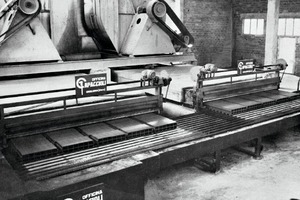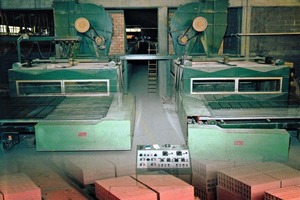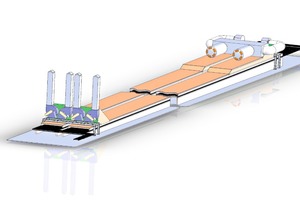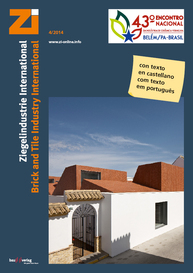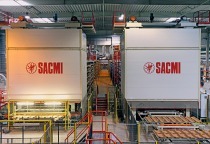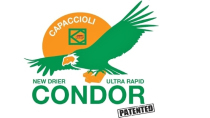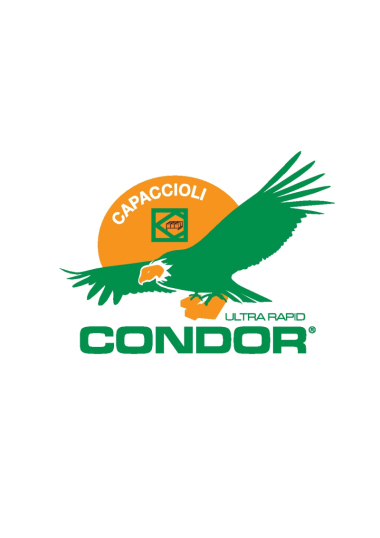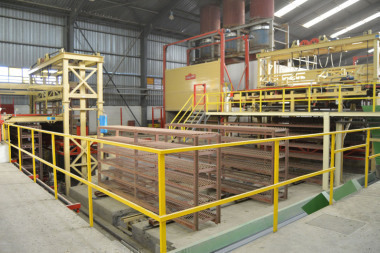While in the company’s early years in the 1950s and 1960s, Capaccioli mainly manufactured automation systems and dryers, today the company produces an entire range of machinery for making clay bricks and roofing tiles including equipment for wet and dry clay preparation, dryers, kilns, automation systems and packaging equipment.
History of roller dryers
In the 1960s Capaccioli developed the first rapid dryer with loading/unloading system. This was continuously further developed until ultimately the first version of the current Scirocco Dryer was launched on the market. In those years the Italian building industry was booming, the towns grew fast and on the market there was a high demand for lightweight products such as partition wall blocks, ceiling blocks, external wall blocks with a high percentage of perforations (> 50%). These kinds of products, made from suitable clays, were perfect for rapid drying and the Capaccioli’s Scirocco dryers met with great success.
The first dryer of this type was installed in the masonry brick plant owned by Moccia Industria so that this particular version of the dryer was named Moccia. Following different developments, the Scirocco rapid dryer is presented today as an efficient and effective installation and an excellent solution for modern brickworks worldwide.
General description
› �Structure:
The products to be dried are transported on moving rollers through a brick-built tunnel.
› �Counter-flow of processing air: At the entry to the dryer, the products meet with air at a relatively low temperature and high humidity. The temperature is gradually increased while humidity decreases. Owing to the high air flow rate (20 to 24 m/s), the heat exchange is very fast, efficient and uniform. Close to the exit of the dryer, processing air recovered from the exhaust air of the kiln and, if necessary, heated by means of line burners, is introduced by means of two centrifugal fans. At the entry to the dryer the humid waste air is sucked up by two high-powered centrifugal fans that then discharge it outside the dryer.
› �Transport of the products: The products are grouped in rows, aligned and automatically fed into the dryer where they are moved on motorized rollers. The rollers are driven by geared motors with inverters. The roller speed can be changed depending on the type of the brick to be dried and the required drying cycle.
› �Different sizes and dimensions are possible: The most commonly installed dryer has multiple channels, each one with two decks for transport of products.
› �Drying cycle: From 80 to 160 minutes
Possible configurations for Capaccioli roller dryers
› �Scirocco-M (“Moccia”) – single channel
› �Scirocco DL – (single channel, two tiers): 90% of common hollow blocks are suitable for double-layer loading in one tunnel, the capacity of the dryer is doubled even with the single-tunnel version.
› �Scirocco M2T (double tunnel, two tiers with lifting equipment), two channels
› �Multiple channels and layers: single or double channels positioned side by side and connected, with single- or double-layer loading pattern, can be combined without any limits by the Capaccioli designers in order to obtain the necessary capacity.
Advantages
› �Low cost of initial investment: The cost of the dryer is usually lower than that for other rapid dryers or traditional continuous dryers. It consists of a very simple masonry structure, process fans, burners and roller benches. The Scirocco dryer does not require complicated machines for loading/unloading, so the cost of the automatic handling equipment is kept low.
› �Low maintenance costs: The dryer consists of a roller bench, some automatic equipment and doors. The necessary maintenance includes greasing of the rollers and the necessary maintenance for the fans and reducers. No electric parts are exposed to high temperature
› �Simple and fast construction: Thanks to its intrinsic simplicity, the dryer can be built and started up very quickly and easily.
› �Low fuel consumption: The fuel consumption is low compared with other dryers (like, for example, rapid dryers with racks and continuous dryers) because the mechanical parts in each zone operate at the same temperature. The thermal energy is used only for drying the bricks, as there are no racks or dryer cars that are heated up and lose heat when they exit the dryer. The dryer is designed for any type of fuel but it is especially suitable for heavy oil fuel; no heat exchanger is required and it is possible to introduce the combustion product in the drying channel without efficiency losses.
Control of the drying process
The small dimensions mean that the drying process can be easily monitored from the top of the dryer. It is possible to adjust the process in real time if any deviations are detected. The dryer can be equipped with a Capaccioli system with PC or control panel.
Capaccioli 2014: New dry clay preparation line
For the 2014, Capaccioli is presenting some new products that complete the vertical integration of the process. The new products are intended for all customers who, for technical reasons, require very fine clay or clays with low humidity. The new dry preparation line consists of:
› �Different mills
› �Screens
› �Wetting systems
› �Bucket elevators
› �Storage systems

